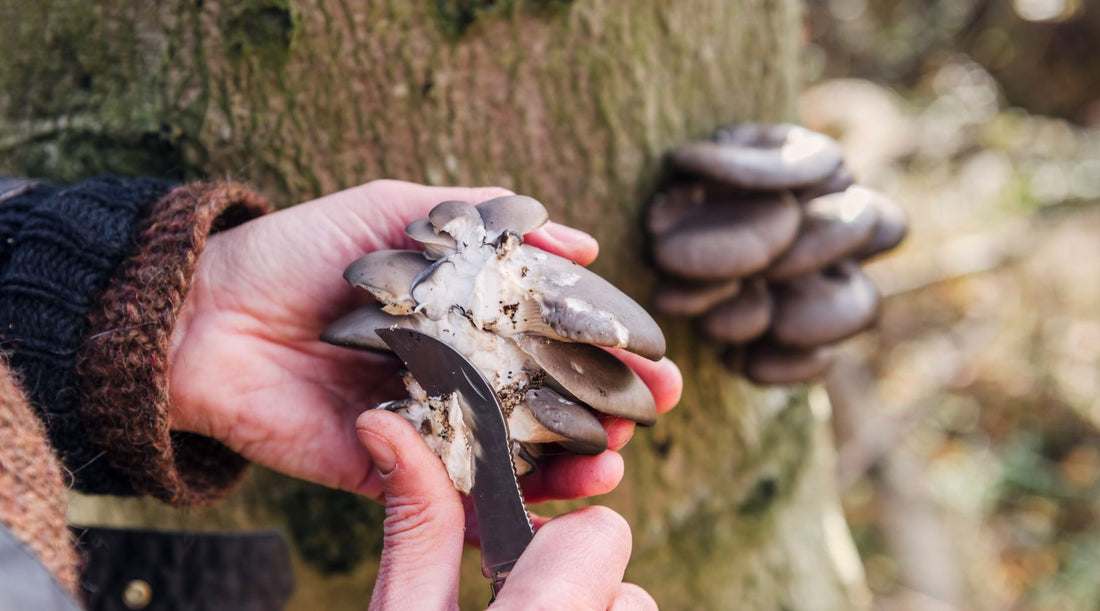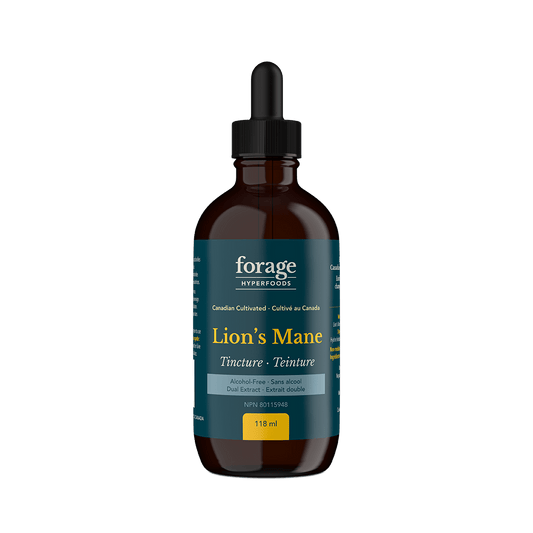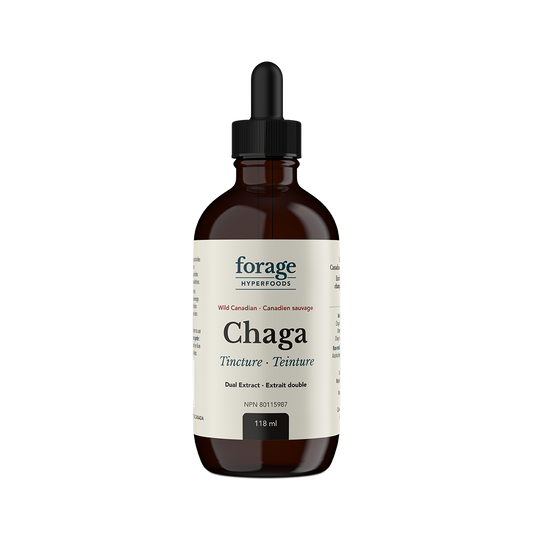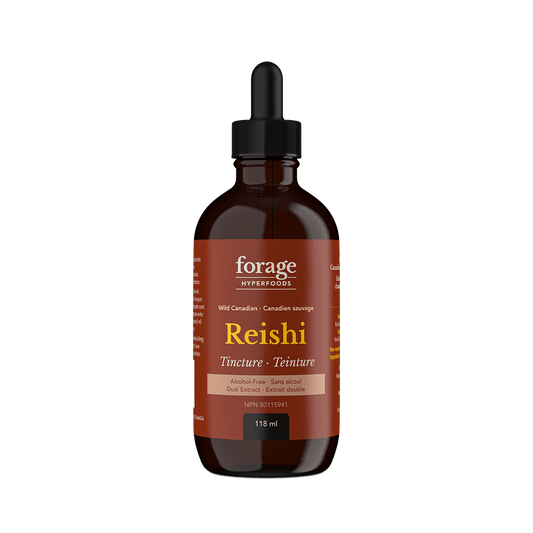For a good reason, mushroom foraging is a popular pastime in Canada. Not only is it a great way to get outside and explore the natural world, but it can also yield delicious and nutritious edibles. However, if you're new to mushroom foraging, it's essential to take the time to learn about the different types of mushrooms and how to identify them correctly. In this guide, we will provide the basics you need to get started.
Tools You'll Need
Before heading out to go mushroom foraging, you'll need to have a few essential tools:
- A mushroom identification guidebook: This will help you identify different types of mushrooms in the field. Look for a guide that includes clear photographs and detailed descriptions. Our recommendation is: The Peterson Field Guide to Mushrooms of North America.
- A basket or mesh bag: This will allow you to collect mushrooms without damaging them or causing them to spoil.
- A pocket knife or scissors: You'll need something to cut the mushrooms from the stem without damaging them. Some mushrooms are easier to pull than others.
-
Gloves: Optional but highly recommended. Some mushrooms can cause skin irritation or allergic reactions, so gloves can help protect your hands. This will also keep your hands clean.
Where to Go Mushroom Foraging in Canada
You can go mushroom foraging in Canada in many different places, but it's essential to know the rules and regulations of each area before you go. Some popular places to go mushroom foraging include:
- Crown land: In some provinces, you can forage for mushrooms on Crown land (public land that the government owns).
-
Private property: If you have permission from the landowner, you can go mushroom foraging on privately owned property.
Please note that foraging for mushrooms is illegal in provincial and national parks in Canada.
Beginner-Friendly Mushrooms to Identify
When starting out, it's best to focus on mushrooms that are easy to identify and don't have any poisonous look-alikes. Here are a few beginner-friendly mushrooms to look for:
-
Chanterelles
These mushrooms have a distinctive trumpet shape and a bright orange or yellow colour. They grow in forests and are usually found near the base of trees. Chanterelle mushrooms can be identified by their distinct features. They typically have a funnel-shaped cap with a wavy margin, ranging in colour from vibrant yellow to orange. The cap's surface is smooth and dry, often resembling a wrinkled or convoluted structure. The gills underneath are widely spaced, forked, and extend partially down the stalk. The stalk is solid, firm, and of similar colour to the cap. When examining the flesh, it should be white or pale yellow, with a mild and pleasant aroma.
-
Morels
Morel mushrooms are easily recognizable due to their distinctive appearance. They have a honeycomb-like cap that is hollow and cone-shaped, with ridges and pits that create a unique textured pattern. The colour of the cap can range from light tan to dark brown, often blending with the forest floor. Unlike most mushrooms, Morels do not have true gills but rather a spongy, pitted surface on the underside of the cap. The stem is typically pale, cylindrical, and hollow. Morels are highly sought after by foragers for their rich, earthy flavour, and they typically grow in wooded areas, particularly after spring rains. However, caution should be exercised when foraging, as there are toxic look-alikes, and it's advisable to consult an expert or reputable sources to ensure accurate identification.They grow in forests and are often found near dead or dying trees. Forests that recently burned down are incredibly fertile areas to find these delicious mushrooms.
-
Hedgehogs
Hedgehog mushrooms have a convex or slightly flattened cap with a velvety texture and are typically light to dark brown in colour. Instead of traditional gills, Hedgehogs have spines or teeth-like structures on the underside of the cap, which are also the same colour as the cap. These spines are one of the key features that set them apart from other mushrooms. The stem of the hedgehog mushroom is usually short and stout. Hedgehogs can be found in both coniferous and deciduous forests, often growing in clusters. They have a delicious nutty or fruity flavour.
-
Puffballs
Puffball mushrooms are typically spherical or pear-shaped, ranging in size from small to large. The outer surface of a puffball is smooth and often white or tan, but it can vary in colour. As the name suggests, when mature, Puffballs release a cloud of spores when pressure is applied to the outer skin, giving them a "puffing" effect. Unlike other mushrooms, puffballs lack a distinct cap and instead have a uniform interior filled with a mass of powdery spores. The flesh inside is white and firm when young, gradually turning yellowish or brown as it matures. Only fully white Puffballs should be eaten. They can be found in various habitats, such as fields, woodlands, and lawns, and they are typically considered safe to eat when young and white inside.
-
Lion's Mane
Lion’s Mane mushrooms are characterised by their unique, cascading growth pattern that resembles a lion's mane, hence their name. The mushrooms consist of long, shaggy, and icicle-like spines that hang down from a central point. The spines are white or cream-coloured. Lion's Mane mushrooms are typically found on hardwood trees, particularly during late summer and fall. Besides their visual appeal, they are highly valued for their culinary and potential medicinal properties. They grow alone as opposed to clusters like many mushrooms do. When cooked, Lion's Mane mushrooms have a delicate flavour reminiscent of seafood, making them a popular choice for vegetarian and vegan dishes.
-
Lobsters
Lobster mushrooms are a unique and visually striking variety of fungi. They are not a distinct species themselves but rather a result of a parasitic relationship between a certain type of fungus (Hypomyces lactifluorum) and other mushrooms, typically within the Russula or Lactarius genera. Lobster mushrooms have a vibrant, reddish-orange colour that resembles the shell of a cooked lobster, hence their name. The outer surface is often wrinkled or pitted, adding to their distinct appearance. These mushrooms have a firm and meaty texture with a mildly sweet and earthy flavour. They are highly prized by foragers and culinary enthusiasts for their ability to add both colour and a unique taste to various dishes. Lobster mushrooms can be found in forests, particularly near conifers, and are usually encountered during late summer and early fall.
-
Chicken of the Woods
Chicken of the Woods, scientifically known as Laetiporus sulphureus, is a visually striking and widely recognized edible mushroom. It derives its name from its resemblance to chicken meat in both appearance and texture. This fungus typically forms large, overlapping shelves or brackets that grow on living or decaying trees, particularly hardwoods such as oak or chestnut. The fruiting body of Chicken of the Woods can vary in colour, ranging from vibrant orange to yellow, with a smooth or slightly fuzzy surface. It has a soft, tender flesh that is often described as having a taste reminiscent of chicken or seafood.
-
Shaggy Mane
Shaggy Mane mushrooms, scientifically known as Coprinus comatus, are intriguing fungi with a unique appearance and behaviour. They are easily recognizable by their elongated, cylindrical caps covered in shaggy, white to greyish-brown scales. When young, the caps are firm and upright, resembling an elongated cone, but as they mature, they begin to deliquesce, turning into a black, inky liquid. This process is known as autodigestion, and it is one of the distinctive features of Shaggy Mane mushrooms. They typically grow in grassy areas, lawns, and meadows, often appearing in clusters. Shaggy Mane mushrooms have a delicate flavour and are best consumed soon (within hours) after harvest, as they can quickly become soft and deteriorate. It's worth noting that the inky stage of the mushroom can be used for culinary purposes, such as in sauces or soups.
Remember, it's always best to err on the side of caution regarding mushroom identification. If you need clarification on what a mushroom is, don't eat it!
In conclusion, mushroom foraging can be a fun and rewarding activity in Canada. Still, it's essential to take the time to learn about different types of mushrooms and how to identify them properly. Bring a mushroom identification guidebook, a basket or mesh bag, a pocket knife or scissors, and gloves. Check the rules and regulations for the area you plan to forage in and stick to beginner-friendly mushrooms like Chanterelles, Morels, Hedgehogs, and Puffballs. Stay safe, and have fun exploring the wonderful world of mushroom foraging!





